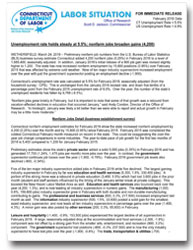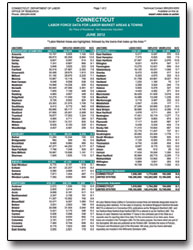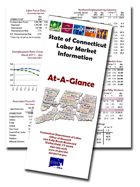What Commuter Rail Brings to Central Connecticut
By Al Sylvestre, Research Analyst, Department of Labor
 enerational change for commuters arrived on June 18, 2018 as the Hartford Line passenger railroad, also known as CT Rail, began daily service between New Haven and Springfield, MA. Official rollout of the service began after a preview weekend so popular that trains had to intermittently stop taking passengers. The $768 million project came to life through a partnership among the Connecticut and Massachusetts state transportation departments, Amtrak, and several federal agencies. This article offers a brief look at CT Rail’s vision and origin, its ridership, and development plans in various stages of completion since CT Rail’s inception two summers ago.
enerational change for commuters arrived on June 18, 2018 as the Hartford Line passenger railroad, also known as CT Rail, began daily service between New Haven and Springfield, MA. Official rollout of the service began after a preview weekend so popular that trains had to intermittently stop taking passengers. The $768 million project came to life through a partnership among the Connecticut and Massachusetts state transportation departments, Amtrak, and several federal agencies. This article offers a brief look at CT Rail’s vision and origin, its ridership, and development plans in various stages of completion since CT Rail’s inception two summers ago.
The Vision
By the mid-1980’s, high rail maintenance costs combined with competition from newly-completed interstate highways led the National Railroad Passenger Corporation, better known as Amtrak, to trim its double-track rail line between New Haven, CT and Springfield, MA. Since taking the train was perceived as less convenient and cost efficient than driving along interstate highways through western New England, Amtrak left just 23% of its 62 miles of rail between New Haven and Springfield as double track while the remainder operated as a single track with passing sidings. In 1994, the Connecticut transportation department (ConnDOT) began a study of potential high-speed commuter rail between New Haven and Hartford that envisioned three trips in the morning and three in the afternoon. By the turn of the century, the vision encompassed commuter rail service running trains hourly between New Haven and Springfield and every half-hour during peak periods. With capital costs approaching $250 million and an annual subsidy of $13 million to carry 1,800–2,000 passengers daily by 2025, gaining support to bring the vision to life would require time and effort.
Ridership
Plans incorporating existing-station improvements, new-station construction, and the addition of a second track with passing sidings, combined with new signal systems, interlockings,1 and the installation of Positive Train Control2 resolved the New Haven-Hartford-Springfield (NHHS—CT Rail’s project name) line’s perceived incompatibility with the South Central Regional Council of Government’s regional mobility plans. ConnDOT hired the Wilbur Smith transportation planning firm to quantify NHHS’s efficacy by applying ConnDOT’s travel model to the prospective rail service demonstrating its ability to attract four user types:
- New Haven, Hartford, and Springfield commuters;
- Intercity users seeking connections to Amtrak trains in New Haven and Springfield;
- Travelers using Bradley International Airport;
- Off-peak weekday, holiday, and weekend users.
ConnDOT’s Hartford Line Year One Report projected 634,000 trips for the state fiscal year ending on June 30, 2019 for about 1,760 average daily trips (final fiscal 2019 boardings were 597,246 for the year, 1,659 per day). Less than one month past the first half of fiscal 2020, CT Rail recorded its one millionth passenger (about 2,400 rider-trips per day), putting it on pace to exceed its 2025 projections. Until Connecticut’s economic activity recovers its stability, it is too soon to project the novel coronavirus pandemic’s effect on ridership. ConnDOT’s transit administrator noted that CT Rail and Shore Line East trips declined 92% since they reduced schedules in early April 2020.
Rail commuters—unlike bus riders who are less likely to have personal transportation and more likely to have jobs requiring their on-site presence—are more likely to hold white-collar positions that accommodate remote working arrangements. The extent to which increased single-occupant vehicle traffic motivates commuters to get back on the train once the region’s economy returns to its pre-pandemic state is a significant factor in determining CT Rail’s return to capacity. With an 83.5% public subsidy of its $43.9 million in fiscal 2020 operating expenses, CT Rail will need to recover its pre-pandemic ridership to fulfill its promise.
Economic Development
The Windsor Station Apartments conversion from a former warehouse and industrial site on Mechanic Street in Windsor is an example of transit-oriented development (TOD) built because of CT Rail. The $23-million fully-leased 130-unit complex completed in May 2017 stands adjacent to the Windsor train station. The development’s two four-story buildings contain 32 studio, 65 one-bedroom, and 33 two-bedroom units. The complex was 90% occupied within five months of its completion with more than 64% of its residents in the targeted 18 to 35 year-old age group. In addition to its success as a TOD project, its construction led to the creation of 350 construction jobs while it supports 10 full-time permanent property-management positions.
Within walking distance of the Windsor Locks town center, a town park on the Connecticut River, and a soon-to-be relocated train station, a long-abandoned mill complex underwent conversion to 160 apartments. Conversion of the JR Montgomery textile mill built in 1871 and abandoned in 1989 included demolition of one building and restoration of another into 79 one-bedroom units and 81 two-bedroom units. Rents for these apartments that feature large windows with views of the Connecticut River range from $370 - $1,047 for income-restricted units to $1,080-$1,440 for market-rate units. Road improvements, access to the state park along the river, and the development of a new town park are among the public improvements completed in connection with the $45-million project.
In addition to the projects described above, completed and prospective TOD projects cited in the September 2019 issue in this publication, and new train stations in Berlin, Meriden, and Wallingford, a mixed-use development in Berlin is set to revitalize its town center. Developers are assembling financing for a project called Farmington and Steele that is set to include 76 apartments and 19,000 square feet of commercial and office space with an $18 million price tag. Developers of the four-acre parcel, situated about 500 feet from the new Berlin train station, envision giving Berlin what they call a proper town center complete with medical offices, restaurants, a bar, and a coffee shop that will attract rail passengers throughout the region. Following property acquisition and the signing of a development agreement, site preparation and construction are delayed by the pandemic.
Conclusion
Until economic activity came to a standstill as a result of the COVID-19 pandemic, there was little doubt that investments in new mixed-use developments around existing or proposed CT Rail stations of about $430 million—including 1,400 residential units and 242,000 square feet of commercial and office space—as cited by ConnDOT were well on their way to fruition. Notwithstanding the pause in economic activity and its related upheaval in employment that was expected to fuel growth in passenger rail service, the development activity cited in this article suggests that the momentum toward increased economic prosperity invigorated by the nine operating and four planned CT Rail stations stands a decent chance of resumption once the regional economy regains its footing.
 |


















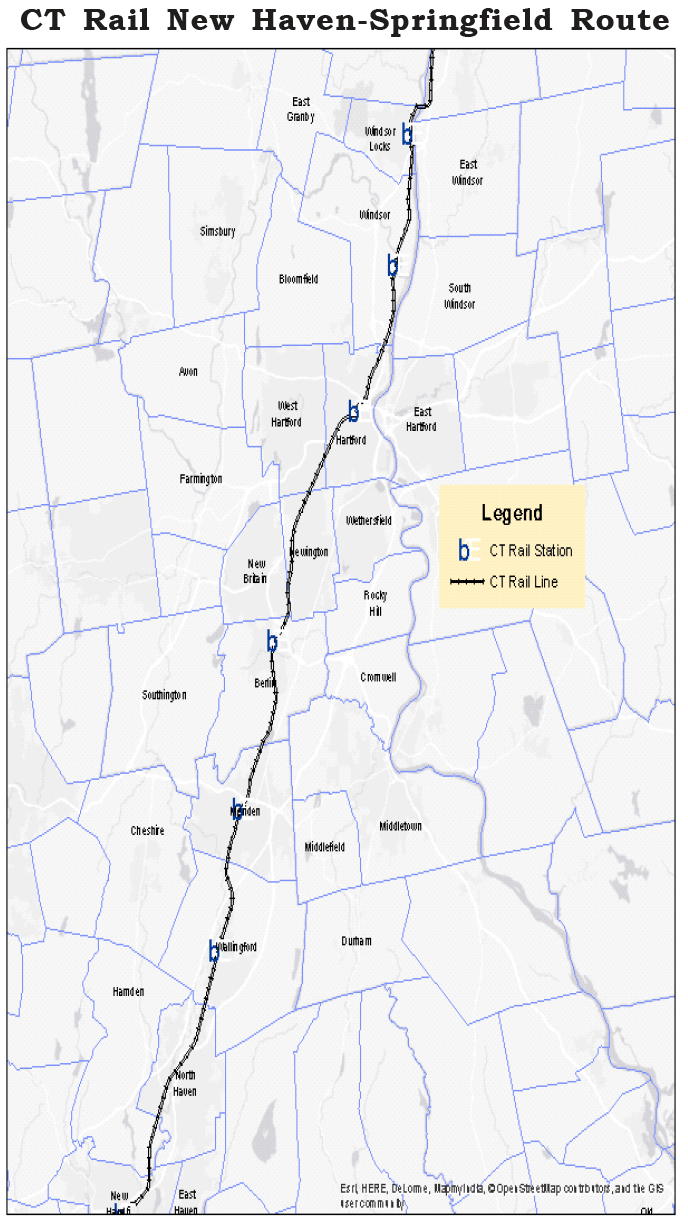
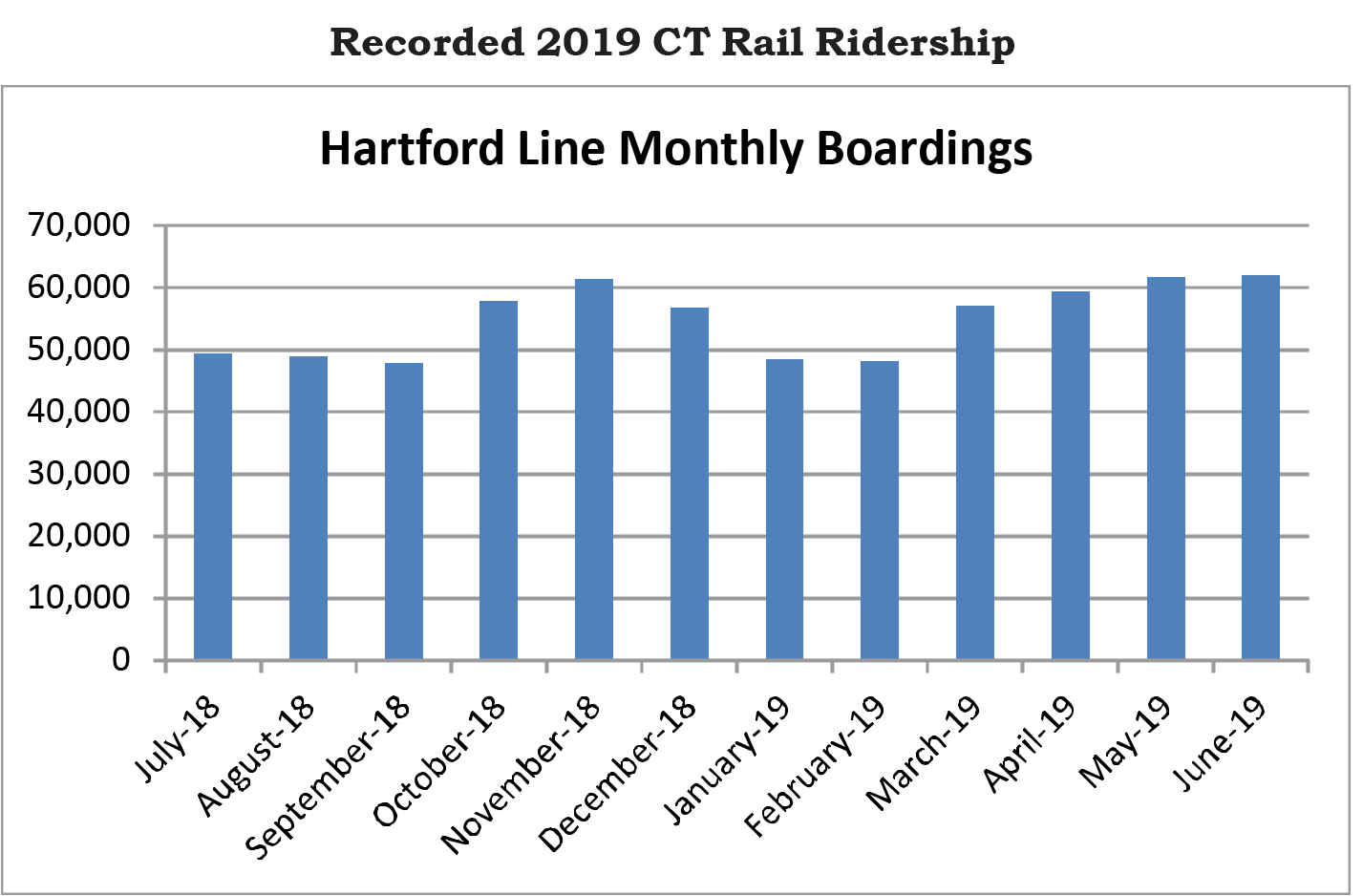
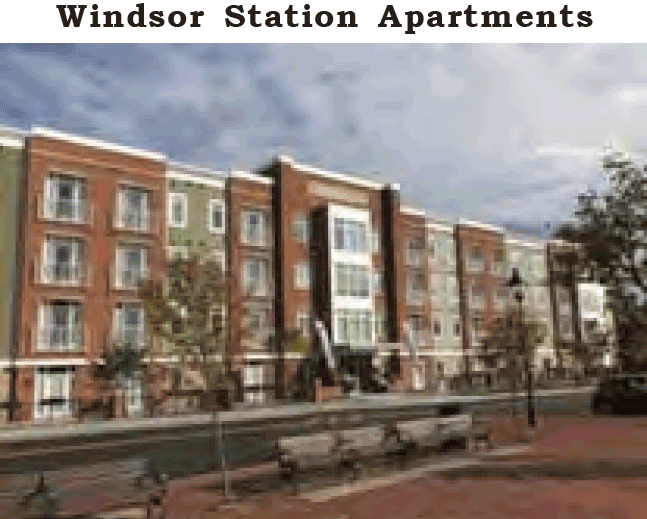

 Used to control traffic at a junction of two or more railroads, an interlocking includes signals and signal appliances that provide a clear signal to a train if a route is deemed safe, then lock in position until the train passes.
Used to control traffic at a junction of two or more railroads, an interlocking includes signals and signal appliances that provide a clear signal to a train if a route is deemed safe, then lock in position until the train passes. Mandated by Congress as part of the Rail Safety Improvement Act of 2008 (RSIA), Positive Train Control (PTC) systems are technologies designed to automatically stop a train before certain accidents related to human error occur.
Mandated by Congress as part of the Rail Safety Improvement Act of 2008 (RSIA), Positive Train Control (PTC) systems are technologies designed to automatically stop a train before certain accidents related to human error occur.
